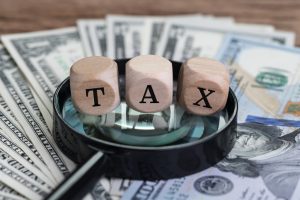Understanding the Tax Rules Relating to Personal Use of Vacation Homes
There are three basic rules for treating expenses and income in connection with vacation homes. It all depends on the number of days the home is rented versus the days that it is used for personal purposes.
1) When the personal use of the vacation home exceeds the greater of 14 days or 10% of the days it is actually rented all the expenses are only deductible to the extent of rental income. For example repairs, utilities, insurance, depreciation, and so on are deductible only to the extent of gross income less mortgage interest and property taxes attributable to rental use. However, you cannot claim a loss on the rental, while net income in excess of expenses is taxable.

2) When the vacation home is rented out for less than 15 days during the year, there are no tax ramifications. In other words, you don’t recognize rental income or deduct rental expenses.
For example, say you rent a beach house in Ocean City. You and your family use the beach house most of the summer. Then you rent out the place the two weeks after Labor Day. In effect, all of the rental income is tax-free.
Note: You still can claim those itemized deductions you would be entitled to if you did not receive any rental income. This includes mortgage interest limited to all mortgages up to $1,000,000, used to buy, construct, or improve your first home and second home for tax years prior to 2018. Beginning in 2018, this mortgage limit is lowered to $750,000. In addition, for tax years beginning in 2018 there is a $10,000 deduction limit for state and local income taxes and real property taxes.
3) When your personal use of the home does not exceed the greater of 14 days or 10% of the days the vacation home is rented out, the above limits do not apply. All expenses attributable to the rental are deductible – even if you show a loss. However the amount of the loss may be limited by the passive loss rules.
What constitutes a “personal use day” for these purposes? Any day that the home is used by an owner of the family (or family member), someone who pays less than a fair market rental or someone who uses the home under a barter or exchange agreement-even if a fair rental is paid. The amount of time spent at the vacation home doesn’t matter. For instance, if you use the home for just one hour, the whole day is considered a personal use day.
However, a day will not count as a personal day if you spend the time cleaning up or fixing up the place. And that’s true if even if the rest of the family comes along just for the ride.
How do the passive loss rules affect things? In general, losses from so-called passive activities can only be used to offset income from passive activities. The rental activity of your vacation home, by its very nature, will be considered a passive activity.
But there’s still a way to get around the rules. If you “actively participate” in the rental activity, you can use up to $25,000 of loss to offset non-passive income, such as wages and portfolio income. The $25,000 offset is available in full if your adjusted gross income (AGI) is below $100,000. It is phased out until it completely disappears for an AGI above $150,000.
What constitutes active participation? The requirement can be satisfied by regular, continuous and substantial involvement in the rental activity. Examples: participation in management decisions such as approving new tenants, scheduling or supervising repairs, deciding on rental terms, etc. In order to qualify under this exception, you must own at least a 10% interest in the property. Please refer to my blog Understanding What A Real Estate Professional is Under the Passive Activity Loss Rules.
Remember the passive activity loss rules do not come into play at all if your personal use exceeds the 14 days or 10% of the days rented because you cannot deduct the rental loss. If you have any questions contact Gregory J. Spadea at 610-521-0604.

 The Law Offices of Spadea & Associates assists clients with their taxes from all over the country. From time to time our clients need help determining how much state income tax should be withheld from their pension or retirement account distributions. Listed below are the sixteen states that tax pensions and retirement accounts. Obviously, if you do not reside in one of the states listed below you should not have any state income tax withheld from your pension distribution. However if you do live in one of the 16 states listed below, when you fill in IRS form W-4P, you should have state income tax withheld at the following rates:
The Law Offices of Spadea & Associates assists clients with their taxes from all over the country. From time to time our clients need help determining how much state income tax should be withheld from their pension or retirement account distributions. Listed below are the sixteen states that tax pensions and retirement accounts. Obviously, if you do not reside in one of the states listed below you should not have any state income tax withheld from your pension distribution. However if you do live in one of the 16 states listed below, when you fill in IRS form W-4P, you should have state income tax withheld at the following rates:





